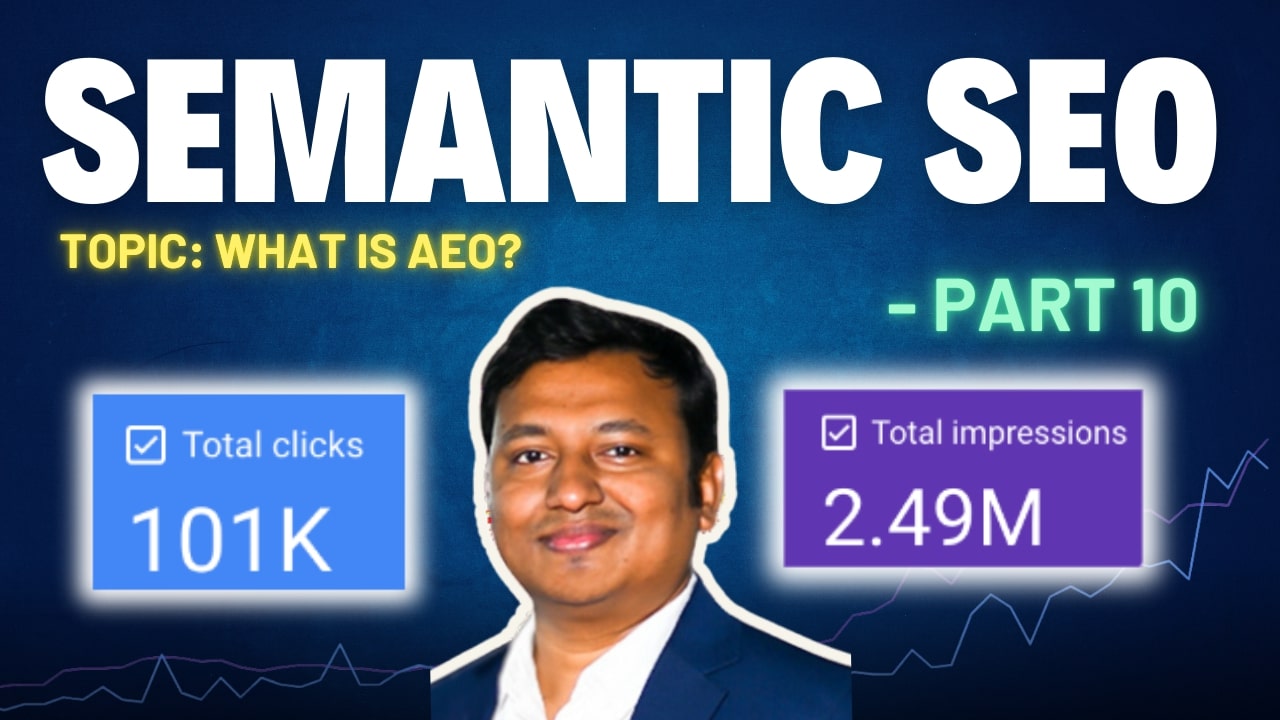In the evolving landscape of search, SEO is no longer just about blue links and keyword matching. As search engines like Google pivot towards zero-click results, voice search, and AI-generated answers, we enter the next evolutionary stage: AEO – Answer Engine Optimization.
This is not a replacement for SEO.
It is an expansion of it.
If SEO was about ranking on SERPs,
AEO is about being the answer—even if the user never clicks.
Here, we break down:
- What AEO really is
- How it intersects with semantic SEO, NLP, and structured data
- How to prepare your content for zero-click visibility and voice-first experiences
What is AEO? A Definition Rooted in Semantic Search
Answer Engine Optimization (AEO) is the process of optimizing content so that it can be extracted and directly used as an answer by search engines—often without a single click to your website.
AEO is closely tied to:
- Voice search queries (e.g., “What’s the weather today?”)
- Featured snippets
- Google’s Gemini AI search assistant
- Google AI Overview
- Smart assistant responses (Google Assistant, Siri, Alexa)
- Zero-click SERPs
Unlike traditional SEO, AEO prioritizes user intent and semantic relevance over keyword frequency.
ALSO READ …
- What is semantic search
- Google helpful content guidelines
- How do search engines work
- What is query semantics
- What should you learn in semantic SEO
“What is vitamin C in carrots?”
Google shows a direct answer. You may not get the click—but you own the answer space.

SEO vs AEO: Understanding the Shift in Optimization Paradigm
| Aspect | Traditional SEO | Answer Engine Optimization (AEO) |
|---|---|---|
| Focus | Ranking Pages | Delivering Answers |
| Query Type | Keyword-Based | Intent-Based (Conversational) |
| Content Structure | Long-Form, Paragraphs | Fragmented, Skimmable, FAQ-Based |
| Result Type | SERP with Links | Direct Answers, Snippets, Voice Responses |
| Metrics | CTR, Bounce Rate, Sessions | Visibility, Featured Snippets, Voice Triggerability |
| Technical Layer | HTML, Meta Tags | Structured Data, Schema.org, JSON-LD |
Why AEO Matters More Than Ever in 2025
1. 60% of Searches Are Now Zero-Click
According to recent data:
- Over half of search queries do not result in a click.
- Users get their answers directly from SERPs, without visiting any website.
- Voice search usage has doubled, making conversational tone and direct answer formatting essential.
2. Search is Becoming Multimodal
Google is not just parsing text. It’s interpreting:
- Text (Featured snippets)
- Voice (Smart assistants)
- Images (Google Lens)
- Video (Key Moments in YouTube)
- AI Summaries (Gemini, SGE)
You must now optimize your content across all formats.
The Core Elements of AEO in Semantic SEO
1. User Intent Classification
- Use People Also Ask, Google Autocomplete, and Search Console Queries.
- Identify WS questions: What, Why, Where, When, Who, How.
- Categorize into navigational, informational, transactional buckets.
Tip: Use tools like AlsoAsked, Answer the Public, and Frase to extract long-tail questions.
2. Structured Content with Schema Markup
Structured data helps machines understand and extract precise answers.
Use:
FAQPageHowToQAPageRecipeProductLocalBusiness
Use JSON-LD, as Google prefers it for entity parsing.
3. Conversational Tone for Voice Search
AEO content should be:
- Written in a 1:1 conversational style
- Answers should be clear, concise, and first-sentence loaded
- Use simple syntax—readable at a Grade 6–8 level
Voice Query Simulation:
User: “What is the best time to visit Cox’s Bazar?”
Your content (first line): “The best time to visit Cox’s Bazar is between November and February, when the weather is cooler and the sea is calm.”
4. Zero-Click Optimized Snippet Blocks
Google loves to show:
- Step-by-step bullets
- Comparison tables
- Feature checklists
- Short definitions (40–50 words)
Make sure to:
- Use HTML tags (
<ul>,<ol>,<table>,<h2>,<p>) - Include direct answer paragraphs below each heading
- Add FAQ schema for every page
5. Topical Authority + Entity Coverage
Semantic search depends on:
- Entity richness
- Contextual linking
- Topical maps
Your AEO success improves as you:
- Cover the full topical domain (not just a keyword)
- Build internal link graphs among related answers
- Add semantic relevance through entity mentions
Advanced Techniques: AEO for Different Search Scenarios
Informational Queries
- Use FAQ sections with schema
- Target featured snippet formats
- Add anchor links and jump-to text
Commercial/Transactional Queries
- Use Product schema
- Add price, specs, availability using markup
- Use comparison tables (e.g., “Best Laptops Under $500”)
Local SEO
- Add
LocalBusinessschema - Include open hours, location, map links
- Use natural language: “Where can I get sushi near Gulshan?”
AEO + Semantic SEO: The Perfect Integration
| Semantic SEO Element | AEO Implication |
|---|---|
| Entities | Enable accurate answer extraction |
| NLP | Supports context-based ranking |
| Structured Data | Enables rich snippet visibility |
| Topical Authority | Increases trustworthiness in answer selection |
| Internal Linking | Reinforces contextual clusters |
Remember: Google isn’t just ranking keywords. It’s ranking knowledge graphs and relational relevance.
Conclusion: AEO Is the Future of Content Visibility
We are not moving away from SEO—we are expanding into semantic-first, AI-ready, user-centric SEO.
“AEO is not about ranking on Google. It’s about being Google’s answer.”
To survive in the zero-click era:
- Think in entities, not keywords
- Write for intent, not density
- Structure for machines, not just humans
Coming in Part 11: What is Cost of Retrieval in SEO? How Retrieval Efficiency Impacts Semantic SEO Performance
Disclaimer: This [embedded] video is recorded in Bengali Language. You can watch with auto-generated English Subtitle (CC) by YouTube. It may have some errors in words and spelling. We are not accountable for it.
